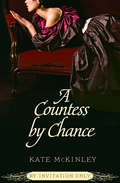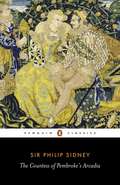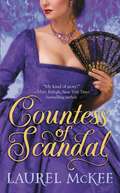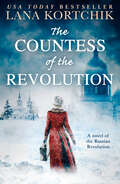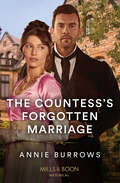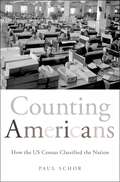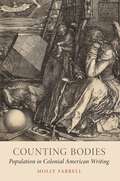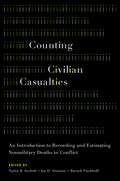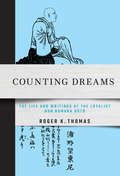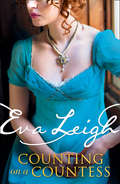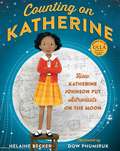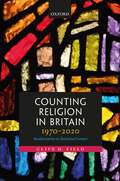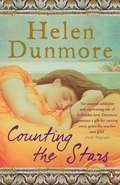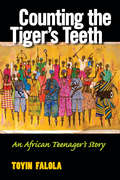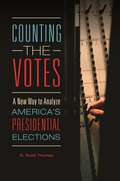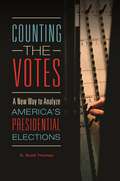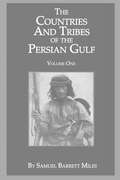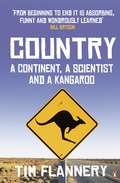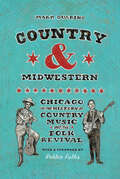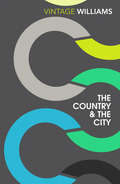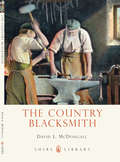- Table View
- List View
A Countess by Chance (By Invitation Only #2)
by Kate McKinleyThings aren't as proper as they seem in Regency London...The next passionate novella in Kate McKinley's erotic trilogy. A COUNTESS BY CHANCE A gambler's daughter, Sophia Weatherby knows her way around a deck of cards. So when her family estate becomes threatened, she has no choice but to use her skills at the gaming tables to save herself from ruin. A lavish house party affords her the perfect opportunity-until the newly minted Earl of Huntington arrives. Adam Greyson has never forgotten the day Sophia rejected his proposal. Now to even the score, he challenges her to a shocking wager-his two thousand pounds against the one valuable commodity she has left: her virtue.
The Countess of Pembroke's Arcadia: The Original Quarto Edition (1590) In Photographic Facsimile, With A Bibliographical Introduction (classic Reprint) (English Library)
by Philip SidneyBasilus, a foolish old duke, consults an oracle as he imperiously wishes to know the future, but he is less than pleased with what he learns. To escape the oracle's horrific prophecies about his family and kingdom he withdraws into pastoral retreat with his wife and two daughters. When a pair of wandering princes fall in love with the princesses and adopt disguises to gain access to them, all manner of complications, both comic and serious, ensue. Part-pastoral romance, part-heroic epic, Sidney's long narrative work was hugely popular for centuries after its first publication in 1593, inspiring two sequels and countless imitations, and contributing greatly to the development of the novel.
Countess of Scandal (Daughters of Erin #1)
by Laurel McKeeAs children, Eliza Blacknall and William Denton ran wild over the fields of southern Ireland and swore they would be friends forever. Then fate took Will away to England, while Eliza stayed behind to become a proper Irish countess. Years later, Will finally makes his way home-as an English soldier sent to crush the Irish uprising. When he spies the lovely Eliza, he is captivated by the passionate woman she has become. But Eliza's passions have led her to join the Irish rebel cause, and Will and Eliza now find themselves on opposite sides of a dangerous conflict. When Ireland explodes in bloody rebellion, Will's regiment is ordered to the front lines, and he is forced to choose between his duty to the English king and his love for Eliza and their Irish homeland.
The Countess of the Revolution
by Lana Kortchik‘Everything I love about historical fiction and more.’ Reader review ⭐⭐⭐⭐⭐ Russia, 1917
The Countess's Forgotten Marriage
by Annie BurrowsHer memory has returned And she’s the Countess of Epping!
Counting Americans: How the US Census Classified the Nation
by Paul SchorHow could the same person be classified by the US census as black in 1900, mulatto in 1910, and white in 1920? The history of categories used by the US census reflects a country whose identity and self-understanding--particularly its social construction of race--is closely tied to the continuous polling on the composition of its population. By tracing the evolution of the categories the United States used to count and classify its population from 1790 to 1940, Paul Schor shows that, far from being simply a reflection of society or a mere instrument of power, censuses are actually complex negotiations between the state, experts, and the population itself. The census is not an administrative or scientific act, but a political one. Counting Americans is a social history exploring the political stakes that pitted various interests and groups of people against each other as population categories were constantly redefined. Utilizing new archival material from the Census Bureau, this study pays needed attention to the long arc of contested changes in race and census-making. It traces changes in how race mattered in the United States during the era of legal slavery, through its fraught end, and then during (and past) the period of Jim Crow laws, which set different ethnic groups in conflict. And it shows how those developing policies also provided a template for classifying Asian groups and white ethnic immigrants from southern and eastern Europe--and how they continue to influence the newly complicated racial imaginings informing censuses in the second half of the twentieth century and beyond. Focusing in detail on slaves and their descendants, on racialized groups and on immigrants, and on the troubled imposition of U.S. racial categories upon the populations of newly acquired territories, Counting Americans demonstrates that census-taking in the United States has been at its core a political undertaking shaped by racial ideologies that reflect its violent history of colonization, enslavement, segregation and discrimination.
COUNTING AMERICANS C: How the US Census Classified the Nation
by Paul SchorHow could the same person be classified by the US census as black in 1900, mulatto in 1910, and white in 1920? The history of categories used by the US census reflects a country whose identity and self-understanding--particularly its social construction of race--is closely tied to the continuous polling on the composition of its population. By tracing the evolution of the categories the United States used to count and classify its population from 1790 to 1940, Paul Schor shows that, far from being simply a reflection of society or a mere instrument of power, censuses are actually complex negotiations between the state, experts, and the population itself. The census is not an administrative or scientific act, but a political one. Counting Americans is a social history exploring the political stakes that pitted various interests and groups of people against each other as population categories were constantly redefined. Utilizing new archival material from the Census Bureau, this study pays needed attention to the long arc of contested changes in race and census-making. It traces changes in how race mattered in the United States during the era of legal slavery, through its fraught end, and then during (and past) the period of Jim Crow laws, which set different ethnic groups in conflict. And it shows how those developing policies also provided a template for classifying Asian groups and white ethnic immigrants from southern and eastern Europe--and how they continue to influence the newly complicated racial imaginings informing censuses in the second half of the twentieth century and beyond. Focusing in detail on slaves and their descendants, on racialized groups and on immigrants, and on the troubled imposition of U.S. racial categories upon the populations of newly acquired territories, Counting Americans demonstrates that census-taking in the United States has been at its core a political undertaking shaped by racial ideologies that reflect its violent history of colonization, enslavement, segregation and discrimination.
Counting Bodies: Population in Colonial American Writing
by Molly FarrellQuantifiable citizenship in the form of birth certificates, census forms, and immigration quotas is so ubiquitous that today it appears ahistorical. Yet before the modern colonial era, there was neither a word for "population" in the sense of numbers of people, nor agreement that monarchs should count their subjects. Much of the work of naturalizing the view that people can be represented as populations took place far outside government institutions and philosophical treatises. It occurred instead in the work of colonial writers who found in the act of counting a way to imagine fixed boundaries between intermingling groups. Counting Bodies explores the imaginative, personal, and narrative writings that performed the cultural work of normalizing the enumeration of bodies. By repositioning and unearthing a literary pre-history of population science, the book shows that representing individuals as numbers was a central element of colonial projects. Early colonial writings that describe routine and even intimate interactions offer a window into the way people wove the quantifiable forms of subjectivity made available by population counts into everyday life. Whether trying to make sense of plantation slavery, frontier warfare, rapid migration, or global commerce, writers framed questions about human relationships across different cultures and generations in terms of population.
Counting Bodies: Population in Colonial American Writing
by Molly FarrellQuantifiable citizenship in the form of birth certificates, census forms, and immigration quotas is so ubiquitous that today it appears ahistorical. Yet before the modern colonial era, there was neither a word for "population" in the sense of numbers of people, nor agreement that monarchs should count their subjects. Much of the work of naturalizing the view that people can be represented as populations took place far outside government institutions and philosophical treatises. It occurred instead in the work of colonial writers who found in the act of counting a way to imagine fixed boundaries between intermingling groups. Counting Bodies explores the imaginative, personal, and narrative writings that performed the cultural work of normalizing the enumeration of bodies. By repositioning and unearthing a literary pre-history of population science, the book shows that representing individuals as numbers was a central element of colonial projects. Early colonial writings that describe routine and even intimate interactions offer a window into the way people wove the quantifiable forms of subjectivity made available by population counts into everyday life. Whether trying to make sense of plantation slavery, frontier warfare, rapid migration, or global commerce, writers framed questions about human relationships across different cultures and generations in terms of population.
Counting Civilian Casualties Ssp C: An Introduction To Recording And Estimating Nonmilitary Deaths In Conflict
by Taylor B. Seybolt Jay D. Aronson Baruch FischhoffCounting Dreams: The Life and Writings of the Loyalist Nun Nomura Bōtō
by Roger K. ThomasCounting Dreams tells the story of Nomura Bōtō, a Buddhist nun, writer, poet, and activist who joined the movement to oppose the Tokugawa Shogunate and restore imperial rule. Banished for her political activities, Bōtō was imprisoned on a remote island until her comrades rescued her in a dramatic jailbreak, spiriting her away under gunfire. Roger K. Thomas examines Bōtō's life, writing, and legacy, and provides annotated translations of two of her literary diaries, shedding light on life and society in Japan's tumultuous bakumatsu period and challenging preconceptions about women's roles in the era.Thomas interweaves analysis of Bōtō's poetry and diaries with the history of her life and activism, examining their interrelationship and revealing how she brought two worlds—the poetic and the political—together. Counting Dreams illustrates Bōtō's significant role in the loyalist movement, depicting the adventurous life of a complex woman in Japan on the cusp of the Meiji Restoration.
Counting on a Countess: The London Underground (Shady Ladies of London #2)
by Eva Leigh‘Delightful banter and delicious passion…simply divine’, New York Times bestselling author Tessa Dare The Scandalous Ladies of London series returns for book two with the ultimate Regency romance for 2019.
Counting on Katherine: How Katherine Johnson Put Astronauts on the Moon
by Helaine BeckerWinner of the information book category of the UKLA Book Awards 2020.Katherine Johnson is the mathematical genius who helped make the historic Apollo 11 moon landings possible and made sure that Apollo 13 returned home safely when the mission was in critical danger. As a child, Katherine loved to count. She counted the steps on the road, the number of dishes and spoons she washed in the kitchen sink, everything! Boundless, curious, and excited by calculations, young Katherine longed to know as much as she could about maths, about the universe . . .Helaine Becker interviewed Katherine and her family for this authorized biography. From Katherine's early beginnings as a gifted student to her heroic accomplishments as a prominent mathematician at NASA, this is the true story of a groundbreaking African-American woman who went above and beyond what was expected of her in the 1960s, saving lives and making enormous contributions to history. Featuring Dow Phumiruk's gorgeous full-colour illustrations throughout.
Counting Religion in Britain, 1970-2020: Secularization in Statistical Context
by Clive D. FieldCounting Religion in Britain, 1970-2020, the fourth volume in the author's chronological history of British secularization, sheds significant new light on the nature, scale, and timing of religious change in Britain during the past half-century, with particular reference to quantitative sources. Adopting a key performance indicators approach, twenty-one facets of personal religious belonging, behaving, and believing are examined, offering a much wider range of lenses through which the health of religion can be viewed and appraised than most contemporary scholarship. Summative analysis of these indicators, by means of a secularization dashboard, leads to a reaffirmation of the validity of secularization (in its descriptive sense) as the dominant narrative and direction of travel since 1970, while acknowledging that it is an incomplete process and without endorsing all aspects of the paradigmatic expression of secularization as a by-product of modernization.
Counting Religion in Britain, 1970-2020: Secularization in Statistical Context
by Clive D. FieldCounting Religion in Britain, 1970-2020, the fourth volume in the author's chronological history of British secularization, sheds significant new light on the nature, scale, and timing of religious change in Britain during the past half-century, with particular reference to quantitative sources. Adopting a key performance indicators approach, twenty-one facets of personal religious belonging, behaving, and believing are examined, offering a much wider range of lenses through which the health of religion can be viewed and appraised than most contemporary scholarship. Summative analysis of these indicators, by means of a secularization dashboard, leads to a reaffirmation of the validity of secularization (in its descriptive sense) as the dominant narrative and direction of travel since 1970, while acknowledging that it is an incomplete process and without endorsing all aspects of the paradigmatic expression of secularization as a by-product of modernization.
Counting the Stars
by Helen Dunmore**FROM THE AUTHOR OF INSIDE THE WAVE, THE COSTA BOOK OF THE YEAR 2017**Counting the Stars is a captivating tale of forbidden love and bestselling author Helen Dunmore's tenth novel.In the heat of Rome's long summer, the poet Catullus and his older married lover, Clodia Metelli, meet in secret.Living at the heart of sophisticated, brittle and brutal Roman society at the time of Pompey, Crassus and Julius Caesar, Catullus is obsessed with Clodia, the Lesbia of his most passionate poems. He is jealous of her husband, of her maid, even of her pet sparrow. And Clodia? Catullus is 'her dear poet', but possibly not her only interest . . . Their Rome is a city of extremes. Tenants are packed into ramshackle apartment blocks while palatial villas house the magnificence of the families who control Rome. Armed street gangs clash in struggles for political power. Slaves are the eyes and ears of everything that goes on, while civilization and violence are equals, murder is the easy option and poison the weapon of choice.Catallus' relationship with Clodia is one of the most intense, passionate, tormented and candid in history. In love and in hate, their story exposes the beauty and terrors of Roman life in the late Republic.'She reels you in . . . Dunmore has a gift for turning every genre she touches to gold' Telegraph`Dunmore at her most innovative and daring . . . a powerful and convincing study of fame and notoriety . . . captivating and compelling' Time Out'Dunmore's strengths as a novelist have always included her skill in sensuous description and her ability to convey the promises and the dangers of erotic love. The Rome she has so vividly realised in Counting the Stars provides a new stage on which to display those strengths' Sunday TimesHelen Dunmore is the author of twelve novels: Zennor in Darkness, which won the McKitterick Prize; Burning Bright; A Spell of Winter, which won the Orange Prize; Talking to the Dead; Your Blue-Eyed Boy; With Your Crooked Heart; The Siege, which was shortlisted for the 2001 Whitbread Novel of the Year Award and for the Orange Prize for Fiction 2002; Mourning Ruby; House of Orphans; Counting the Stars; The Betrayal, which was longlisted for the Man Booker Prize 2010, and The Greatcoat. She is also a poet, children's novelist and short-story writer.
Counting the Tiger's Teeth: An African Teenager's Story
by Toyin FalolaCounting the Tiger’s Teeth narrates a crucial turning point in Nigerian history, the Agbekoya rebellion (“Peasants Reject Poverty”) of 1968–70, as chronicled by Toyin Falola, reflecting on his firsthand experiences as a teenage witness to history. Falola, the foremost scholar of Africa of this generation, illuminates the complex factors that led to this armed conflict and details the unfolding of major events and maneuvers. The narrative provides unprecedented, even poetic, access to the social fabric and dynamic cosmology of the farming communities in rebellion as they confronted the modernizing state. The postcolonial government exercised new modes of power that corrupted or neglected traditional forms of authority, ignoring urgent pleas for justice and fairness by the citizenry. What emerges, as the rural communities organized for and executed the war, is a profound story of traditional culture’s ingenuity and strength in this epic struggle over the future direction of a nation. Falola reveals the rebellion’s ambivalent legacy, the uncertainties of which inform even the present historical moment. Like Falola’s prizewinning previous memoir, A Mouth Sweeter Than Salt, this engagingly written book performs the essential service of providing a way of walking with ancestors, remembering the dead, reminding the living, and converting orality into a permanent text.
Counting the Votes: A New Way to Analyze America's Presidential Elections
by G. Scott ThomasThis easy-to-use handbook presents a fascinating and fresh take on American presidential elections and makes a wide range of statistics available to serious researchers and political fanatics alike.Counting the Votes: A New Way to Analyze America's Presidential Elections isn't your typical history book about presidential elections. Nor is it like most statistical analyses of election results. What this unusual book does offer is an array of innovative statistics—campaign score (CS), potential index (PI), return on potential (ROP), and equalized vote totals (EV*EQ), among others—that provides a provocative, intriguing, and fresh perspective on past presidential candidates and campaigns.Presenting information that has never been compiled and presented before, author G. Scott Thomas provides reams of statistics for all 57 presidential elections (1789 to the present) as well as essays inspired by those races that explore new interpretations of electoral trends. The book also includes lists of outstanding political performances in 179 statistical categories in addition to complete statistical records for 289 presidential candidates. The unique information and metrics introduced in this book will be invaluable to historians, political scientists, and students who are conducting research into voting trends and will serve as additional tools for their work.
Counting the Votes: A New Way to Analyze America's Presidential Elections
by G. Scott ThomasThis easy-to-use handbook presents a fascinating and fresh take on American presidential elections and makes a wide range of statistics available to serious researchers and political fanatics alike.Counting the Votes: A New Way to Analyze America's Presidential Elections isn't your typical history book about presidential elections. Nor is it like most statistical analyses of election results. What this unusual book does offer is an array of innovative statistics—campaign score (CS), potential index (PI), return on potential (ROP), and equalized vote totals (EV*EQ), among others—that provides a provocative, intriguing, and fresh perspective on past presidential candidates and campaigns.Presenting information that has never been compiled and presented before, author G. Scott Thomas provides reams of statistics for all 57 presidential elections (1789 to the present) as well as essays inspired by those races that explore new interpretations of electoral trends. The book also includes lists of outstanding political performances in 179 statistical categories in addition to complete statistical records for 289 presidential candidates. The unique information and metrics introduced in this book will be invaluable to historians, political scientists, and students who are conducting research into voting trends and will serve as additional tools for their work.
The Countries And Tribes Of The Persian Gulf: Volume 1
by Samuel Barrett MilesThis book deals with the ancient and modern tribes and peoples of the countries around the Persian Gulf generally and Oman in particular. It records many environmental factors of the Persian Gulf, such as religious influence, social conditions, commerce, geography, agriculture, and fishing.
The Countries And Tribes Of The Persian Gulf: Volume 1
by Samuel Barrett MilesThis book deals with the ancient and modern tribes and peoples of the countries around the Persian Gulf generally and Oman in particular. It records many environmental factors of the Persian Gulf, such as religious influence, social conditions, commerce, geography, agriculture, and fishing.
Country: A Continent, a Scientist and a Kangaroo (Best Of Country Ser.)
by Tim FlanneryIn his most thrilling and personal book, Tim Flannery writes a love letter to his homeland, drawing on three decades of extensive travel, research and field work to reveal its unique nature. Flannery shows how the kangaroo is inseparable from the environment that created it. And he reveals the vast continent to be a land of subtlety and complexity that becomes comprehensible to those who take the time to learn its hidden and ancient languages.
Country and Midwestern: Chicago in the History of Country Music and the Folk Revival (Emersion: Emergent Village Resources For Communities Of Faith Ser.)
by Mark GuarinoThe untold story of Chicago’s pivotal role as a country and folk music capital. Chicago is revered as a musical breeding ground, having launched major figures like blues legend Muddy Waters, gospel soul icon Mavis Staples, hip-hop firebrand Kanye West, and the jazz-rock band that shares its name with the city. Far less known, however, is the vital role Chicago played in the rise of prewar country music, the folk revival of the 1950s and 1960s, and the contemporary offspring of those scenes. In Country and Midwestern, veteran journalist Mark Guarino tells the epic century-long story of Chicago’s influence on sounds typically associated with regions further south. Drawing on hundreds of interviews and deep archival research, Guarino tells a forgotten story of music, migration, and the ways that rural culture infiltrated urban communities through the radio, the automobile, and the railroad. The Midwest’s biggest city was the place where rural transplants could reinvent themselves and shape their music for the new commercial possibilities the city offered. Years before Nashville emerged as the commercial and spiritual center of country music, major record labels made Chicago their home and recorded legendary figures like Bill Monroe, The Carter Family, and Gene Autry. The National Barn Dance—broadcast from the city’s South Loop starting in 1924—flourished for two decades as the premier country radio show before the Grand Ole Opry. Guarino chronicles the makeshift niche scenes like “Hillbilly Heaven” in Uptown, where thousands of relocated Southerners created their own hardscrabble honky-tonk subculture, as well as the 1960s rise of the Old Town School of Folk Music, which eventually brought national attention to local luminaries like John Prine and Steve Goodman. The story continues through the end of the twentieth century and into the present day, where artists like Jon Langford, The Handsome Family, and Wilco meld contemporary experimentation with country traditions. Featuring a foreword from Grammy-nominated singer-songwriter Robbie Fulks and casting a cross-genre net that stretches from Bob Dylan to punk rock, Country and Midwestern rediscovers a history as sprawling as the Windy City—celebrating the creative spirit that modernized American folk idioms, the colorful characters who took them into new terrain, and the music itself, which is still kicking down doors even today.
The Country And The City
by Raymond WilliamsWITH AN INTRODUCTION BY TRISTRAM HUNTOur collective notion of the city and country is irresistibly powerful. The city as the seat of enlightenment, sophistication, power and greed is in profound contrast with an innocent, peaceful, backward countryside. Examining literature since the sixteenth century, Williams traces the development of our conceptions of these two traditional poles of life. His groundbreaking study casts the country and city as central symbols for the social and economic changes associated with capitalist development.
The Country Blacksmith (Shire Library #735)
by David L. McDougallThe blacksmith was once crucial to village life, whether commissioned for the humblest repair, the most luxurious ironwork or even the odd anvil marriage. Occupying prime position in the village, the forge attracted custom from miles around and was a hive of industry and social interaction. David L. McDougall here describes the varied work blacksmiths undertook, the tools and techniques they used, and the magical and mystical qualities with which they were associated. If you want to know more about the rise and fall of the country blacksmith – and the recent revival of the craft – this colourfully illustrated book is the ideal introduction.
